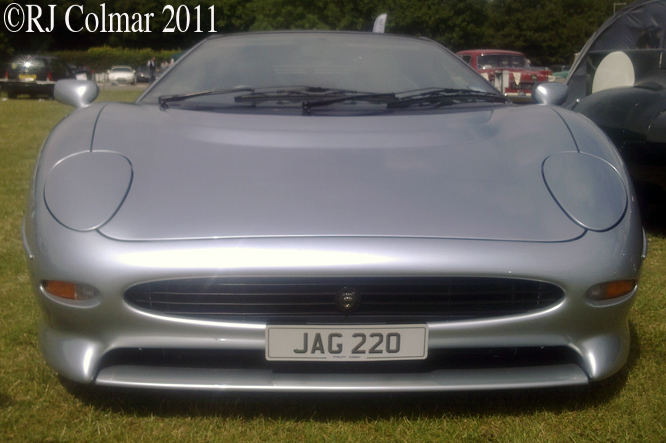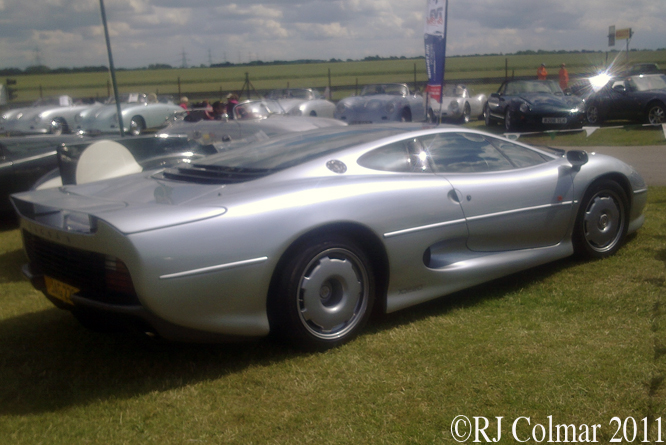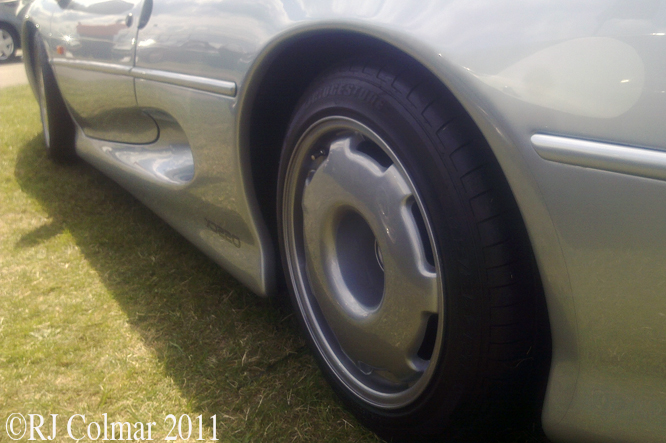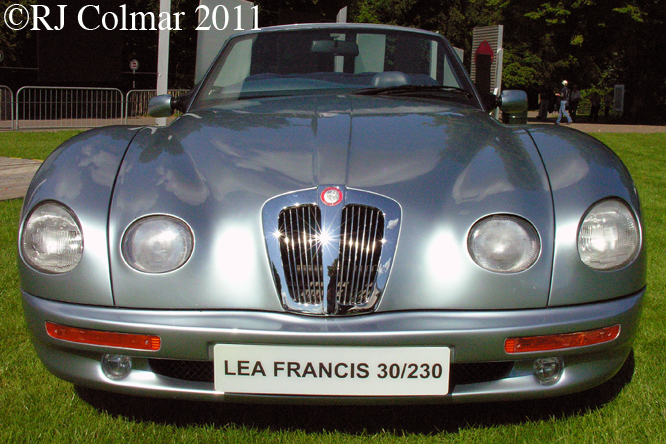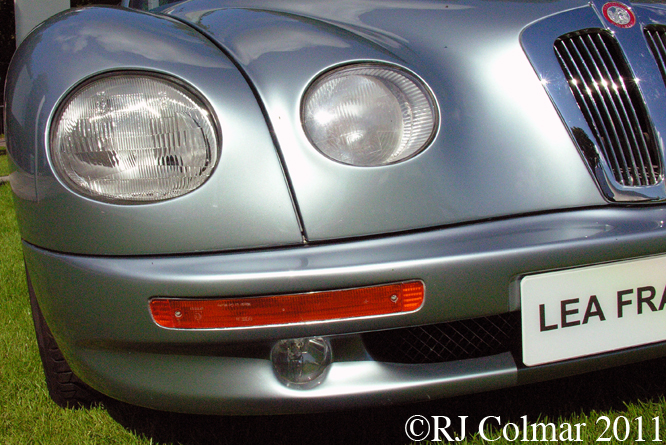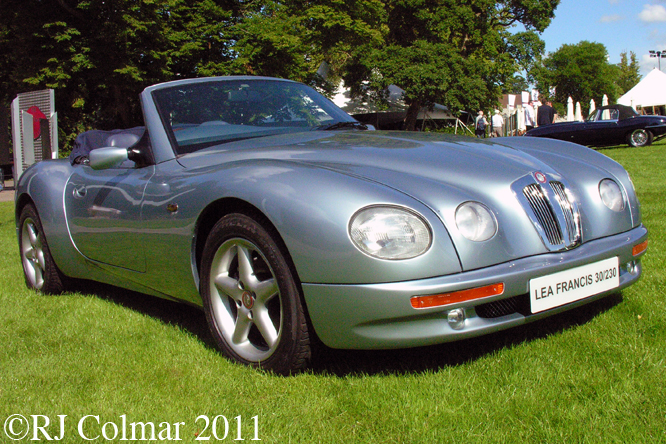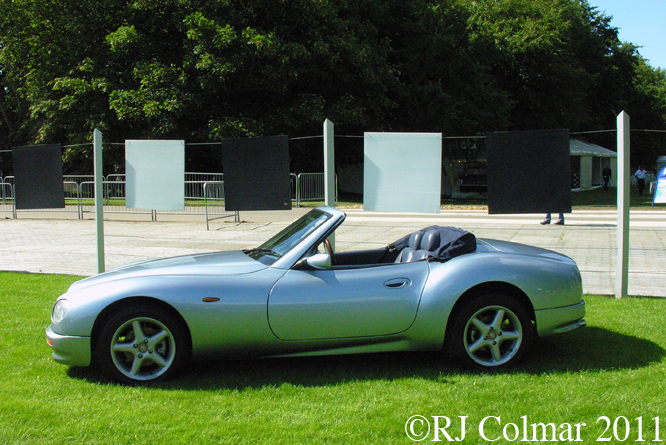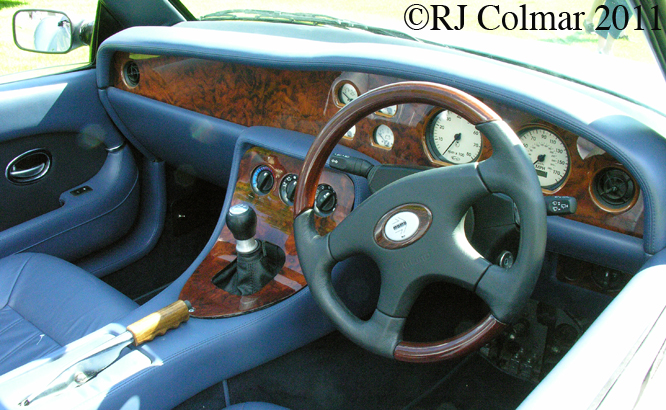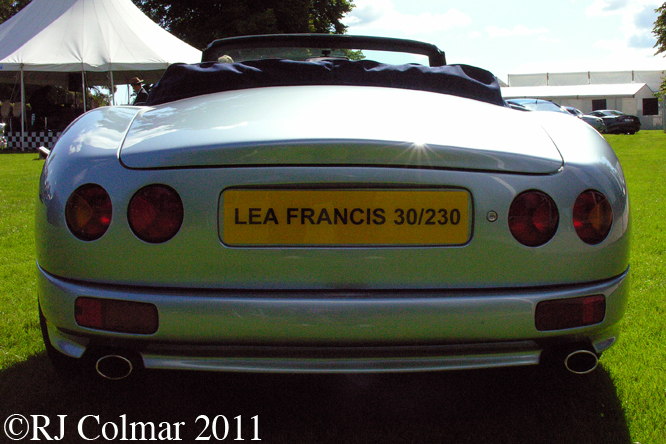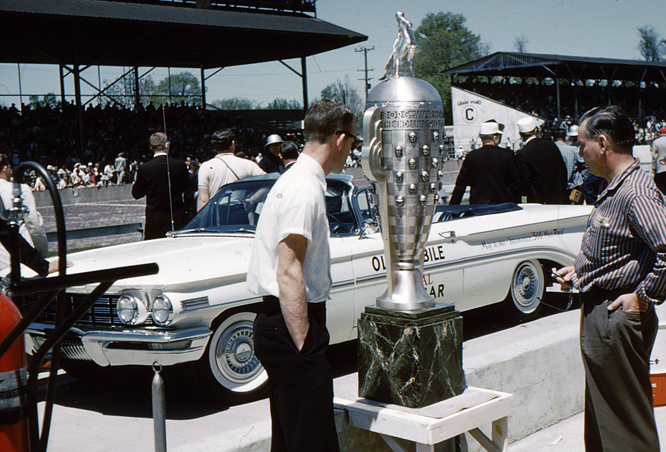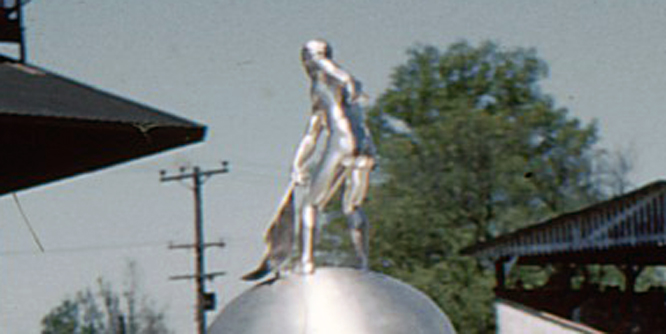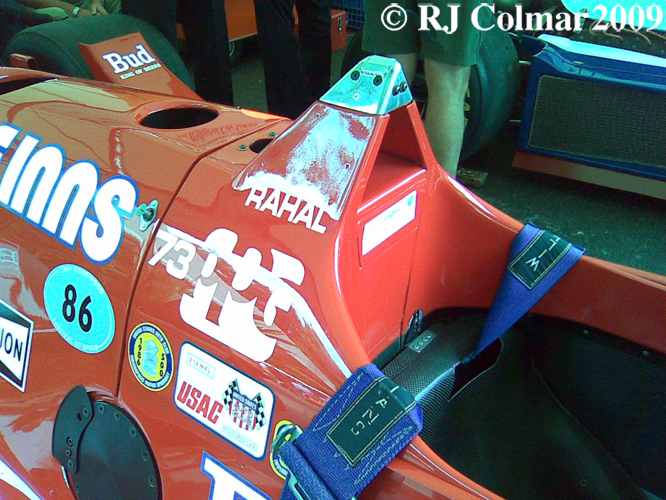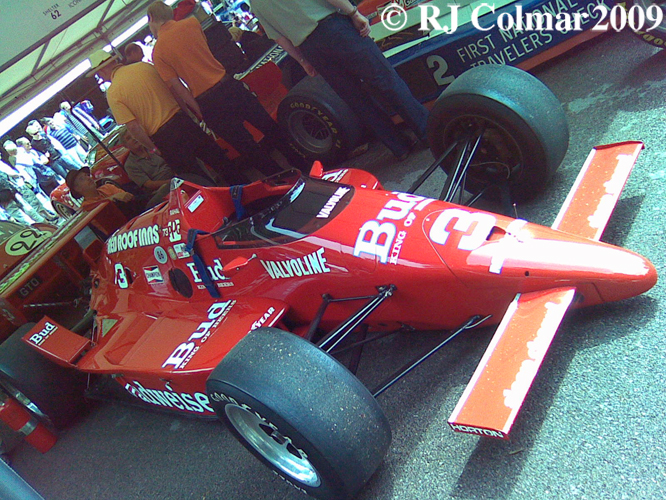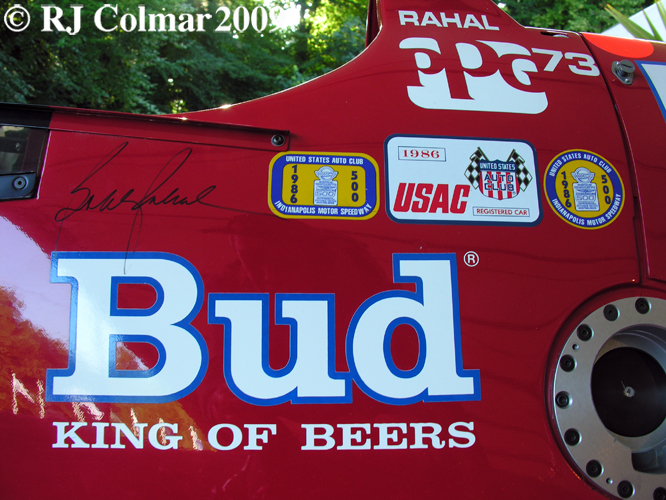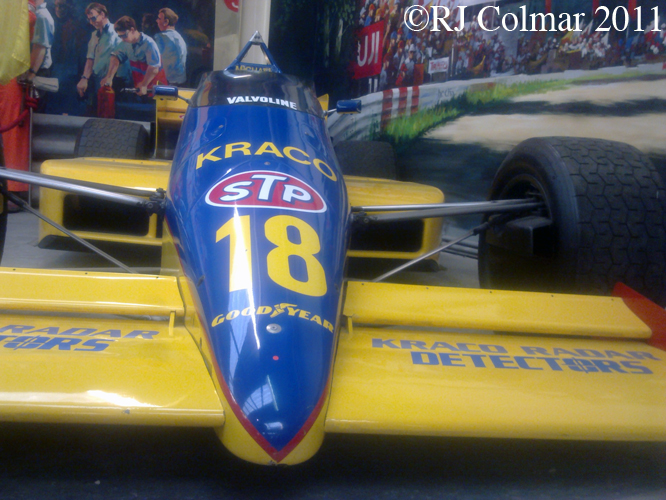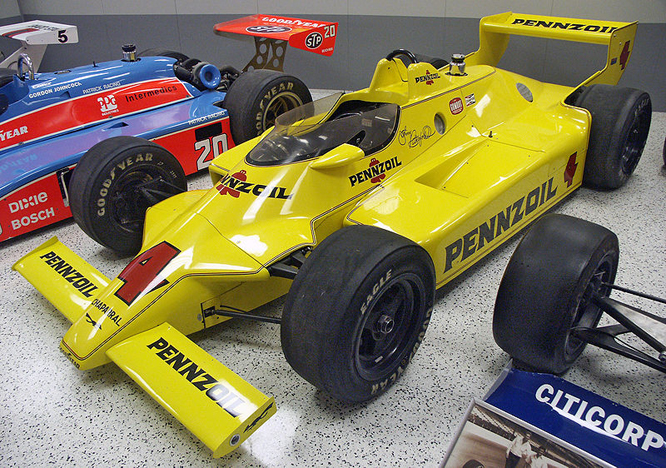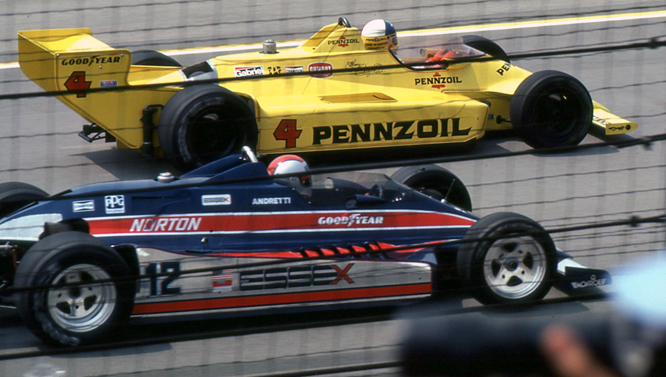Despite the absence of any signs of a thaw to this winter and record fuel prices last weekends Race Retro held at Stoneleigh showed that there are plenty of people looking to have fun on four veteran, vintage and classic wheels powered by internal combustion motors during the season ahead here are some of the highlights.
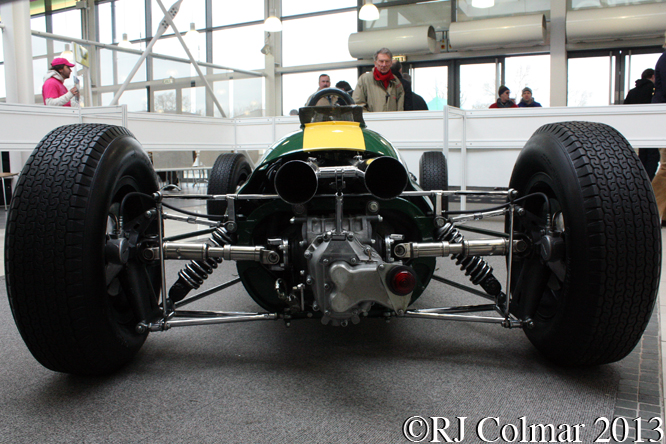
The central theme for this years Race Retro was the 1963 World Drivers Championship and World Constructors Championship wins for Jim Clark and Lotus. Above is the Lotus Climax 25 chassis R5 with which Jim narrowly failed to win the 1962 Championship thanks to a loose oil plug just twenty laps from home.
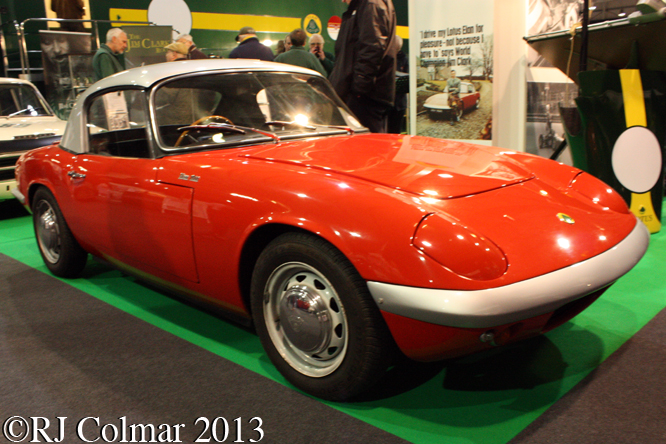
Among several other cars that Jim Clark drove, on the Classic Team Lotus stand, was this Lotus Elan 1500 road car which featured with a kilted Jim Clark in a Lotus ad campaign that can be seen in the back ground.
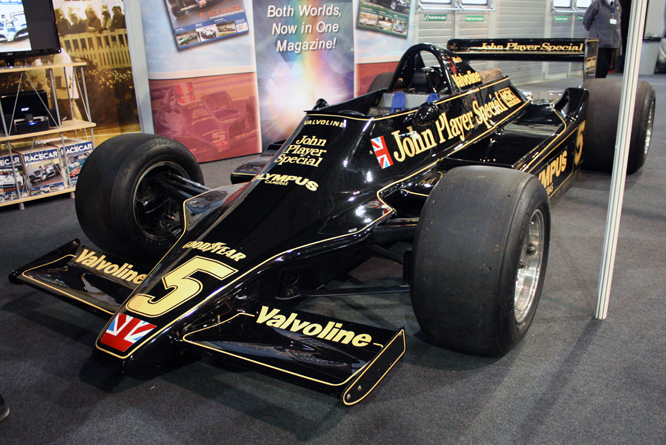
Fifteen years after Lotus scored their first world constructors championship Mario Andretti won the 1978 World Drivers Championship and with the help of Ronnie Peterson secured Team Lotus their seventh and final World Constructors Championship with the aid of the Lotus Ford 79. Seen on the Vintage Race Car (Europe) stand above is the Lotus 79 chassis R3 which Mario drove to victory in the 1978 Spanish, French and German Grand Prix and that Jean Pierre Jarrier qualified on pole for the 1978 Canadian Grand Prix.
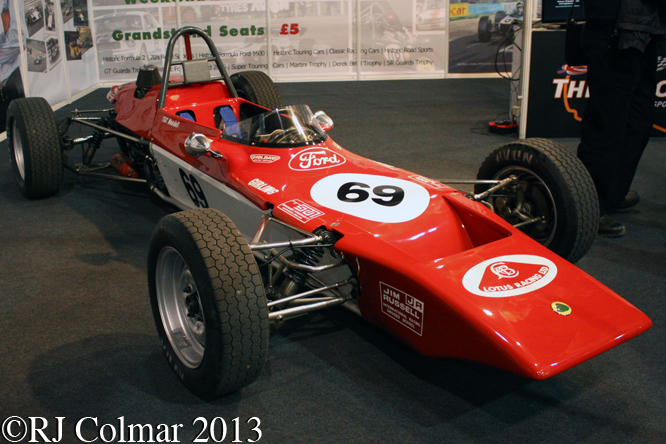
Another interesting Lotus on display was the Lotus 69 Formula Ford car that Tiff Needel won in a competition run by Autosport in 1970. Tiff Needel went on to become a one time Grand Prix Starter in 1980 and sports car racer through until the 1990’s. Tiff will be racing his Lotus 69 with which he started his career at Thruxton’s Easter Revival meeting at the end of March.
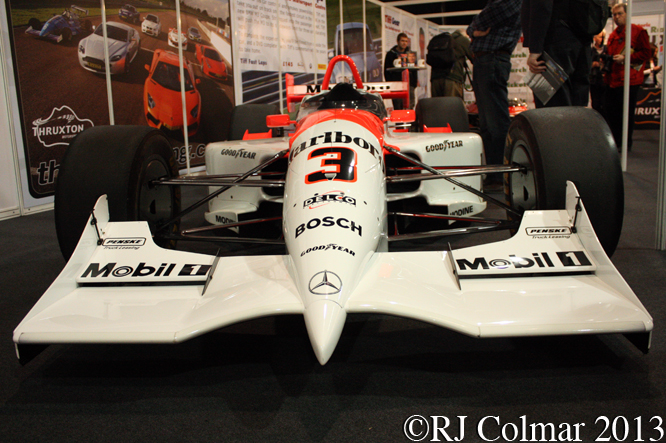
Also on the Thruxton stand was one of the five 1997 Mercedes Benz powered Penske PC26s of the type which Paul Tracey drove to the Penske team’s 99th CART victory at Gateway. That victory would prove to be the last for a car designed and constructed by the Penske Cars workshop in Poole, Dorset, Engand and it would be three years before the Penske Racing would score their 100th victory in the CART Series.
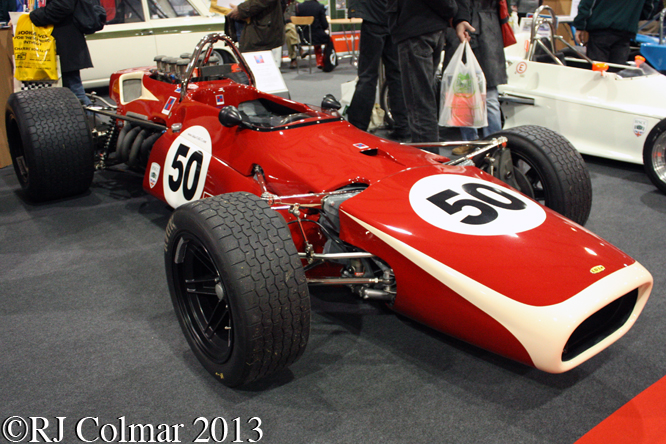
On the Historic Sports Car Club (HSCC) stand was another car that was built in the UK at Lola Cars but raced exclusively in the United States Formula A open wheel series in period. This Lola T140 chassis SL140-7 appears to have been purchased from Lola’s US agent Carl Haas by a Honda dealer Jerry Rosbach in 1968 and raced very little before being crashed. It returned to the UK via e-bay and was restored by Hardy Hall restorations to near factory condition for it’s new owner Richard Summers.
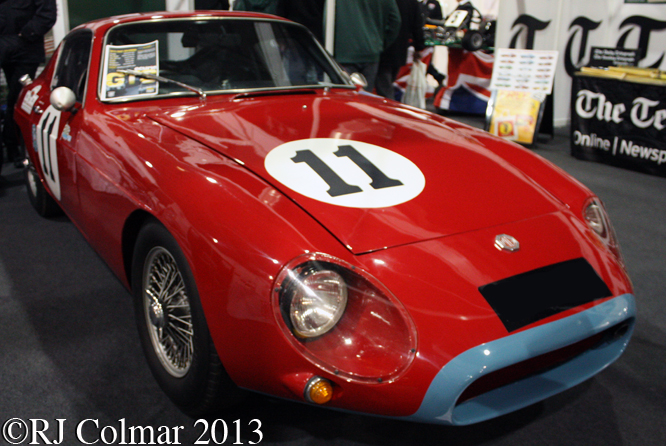
When I visited Race Retro for the first time in 2011 I came across a WSM Sprite for the first time. This year the MG Car Club stand featured the unique WSM MGB which like the Sprites features an aluminium body designed by Douglas Wilson Spratt and built by Peels Coachworks.
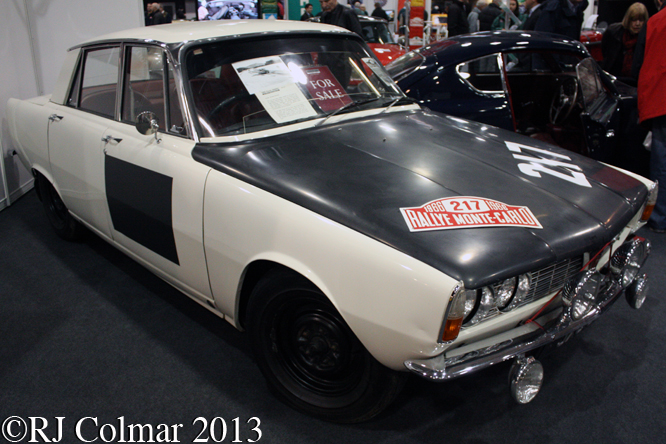
Polands reigning 1965 European Rally Champion Sobislaw Zasada entered the 1966 Monte Carlo Rally in this Rover 2000SC. Starting from Warsaw his rally came to an end against a rock face just outside Monte Carlo. Subsequently the car was driven by works driver Ann Hall who used it eventually as her daily driver. The car was used to develop the 2000 TC motor and for development of the second generation Rover 2200. It’s for sale if anybody is interested please do not hesitate to get in touch, usual disclaimers apply.
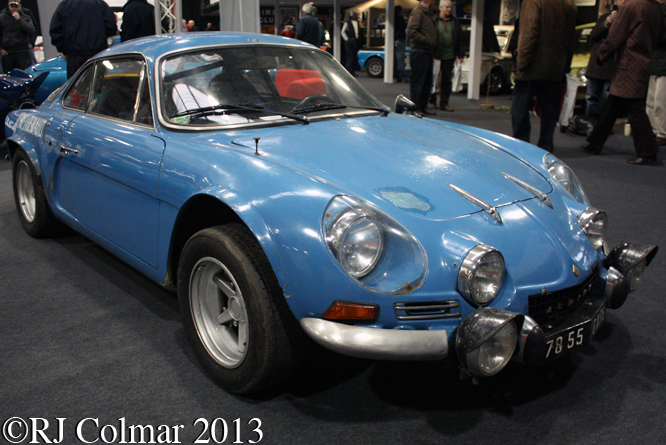
In 1973 Alpine Renault claimed the World Rally Championship with the A110 Berlinette models, this particular originally works prepared competition car was acquired by Roger Clark for Pat Moss to drive in the 1973 British RAC Rally Championship. Pat named the car “Ratty” and after the 1973 chamionship it served as a show car before hibernating for 20 years.’Ratty’ was restored to running order by current owner Chris Rabbets of Roadspeed in 2003.
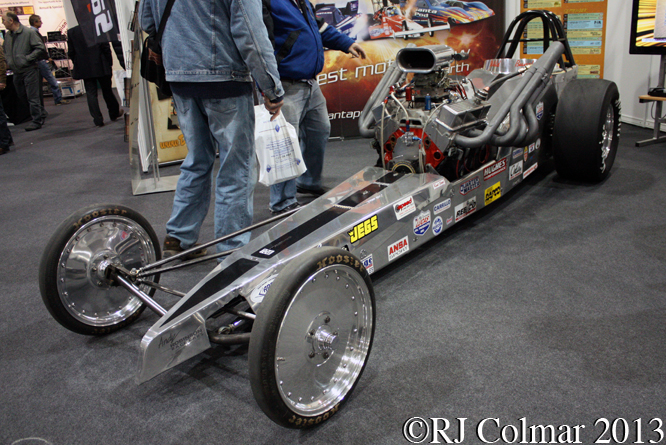
I’ve been promising myself a trip to Santa Pod for some years now, Bob Hawkins 167 mph small block Chevy sling shot dragster WB 91 Time Traveller was a welcome reminder that I do not have the luxury of travelling back in time and so this year there will be no excuses.
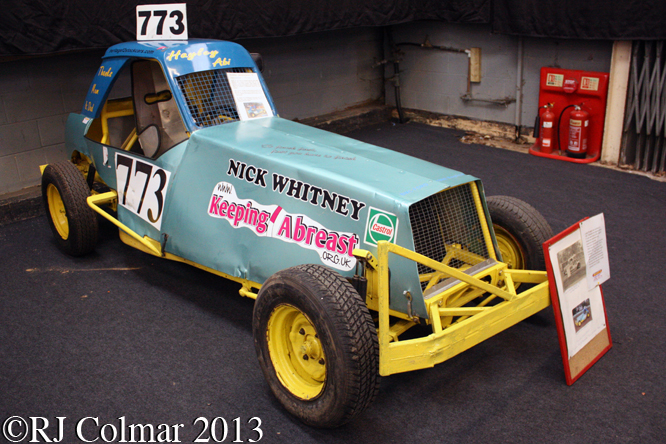
On Jubilee Day last year I managed to find my way to Aldershot Raceway where the #773 BMC Ford Heritage F2 stock car seen above was driven by Nick Whitby, turns out this is a replica of the car his built drove in 1968 with a BMC 1100/ADO16 look alike body and Ford chassis and motor of varying vintages. If you have never been to a stock car race I’d definitely recommend it as a fun day out with the kids the Heritage F2 calender can be seen on this link.
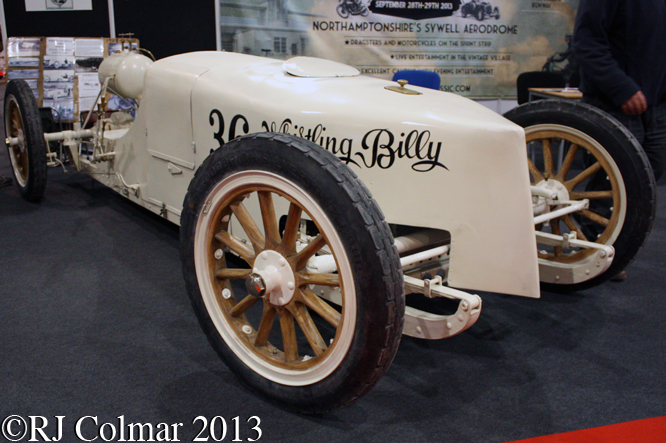
Finally had a great time talking to steam car enthusiast Dr Robert R. Dyke who has recreated a 120 mph White Sprint Car that used to rip up the dirt tracks in 1905. Nicknamed Whistling Billy the original set a closed track record of 74 mph on the 4th July 1905 of nearly 74 mph with Webb Jay aboard. The car is scheduled to appear at the Sywell Classic Pistons and Props event at the end of September.
My thanks to everyone who enthusiastically contributed to today’s blog at Race Retro 2013.
Thanks for joining me on this “Jimmy Jimmy” edition of “Gettin’ a li’l psycho on tyres” I hope you will join me again tomorrow. Don’t forget to come back now !


